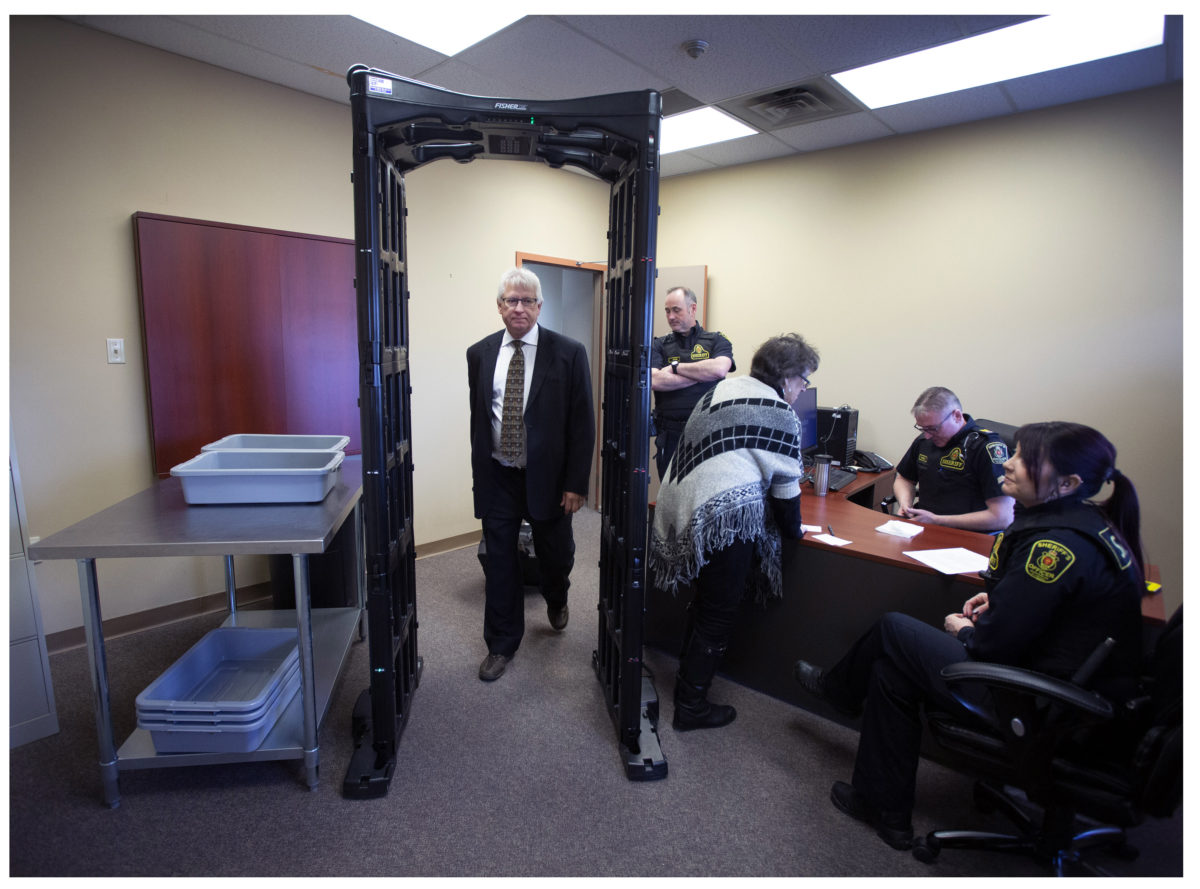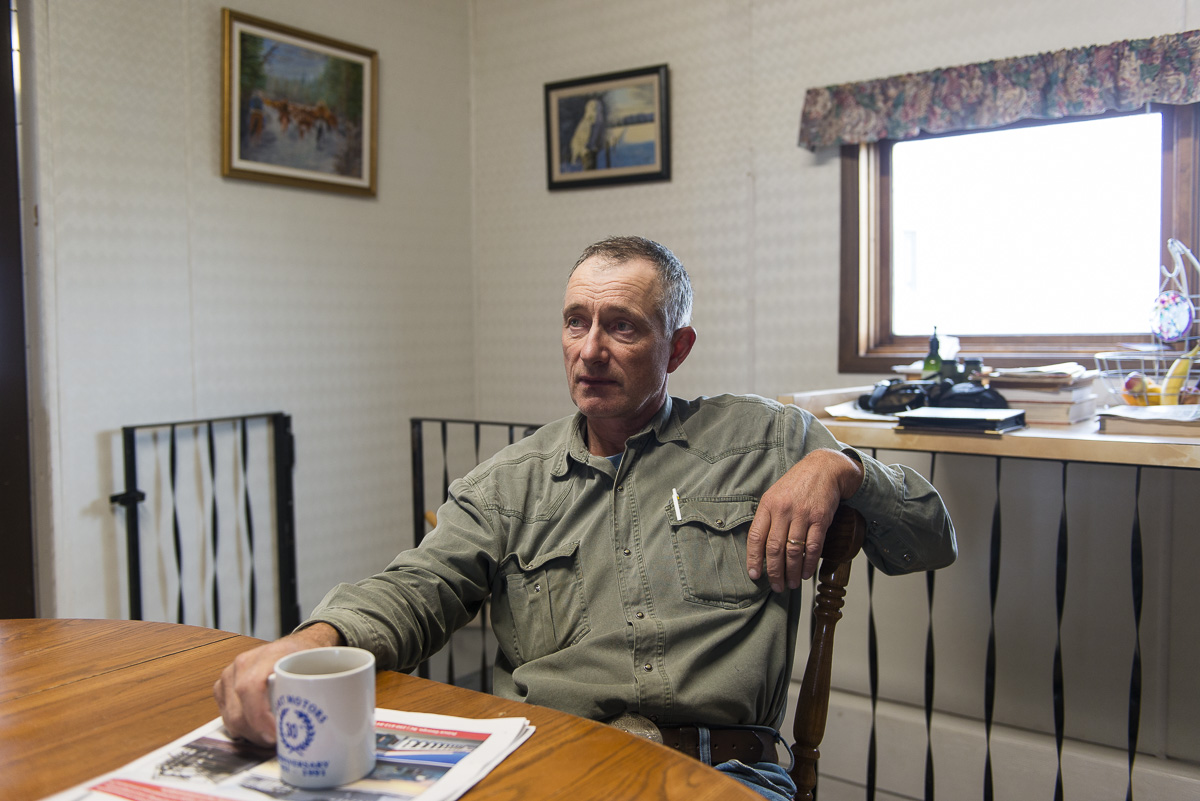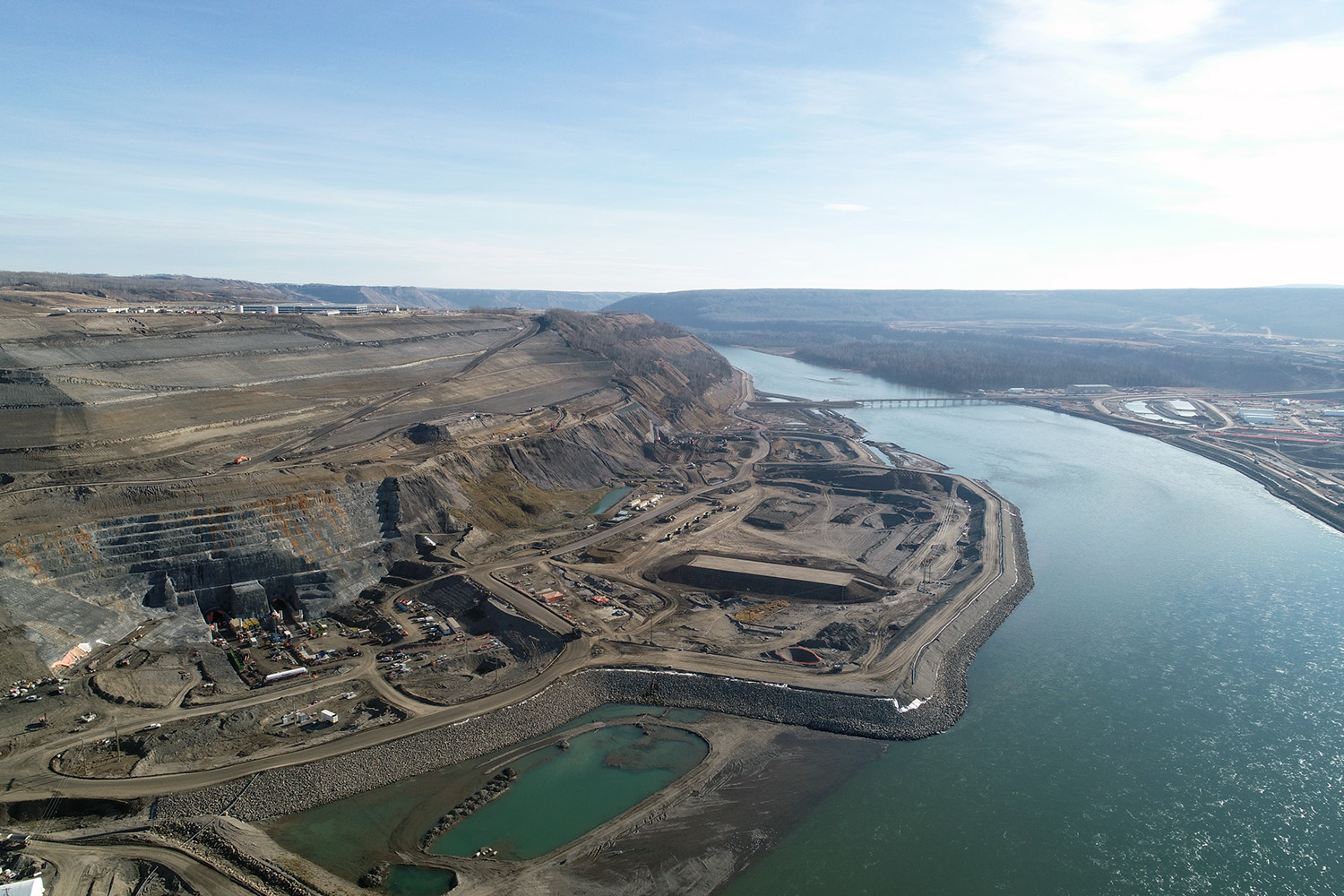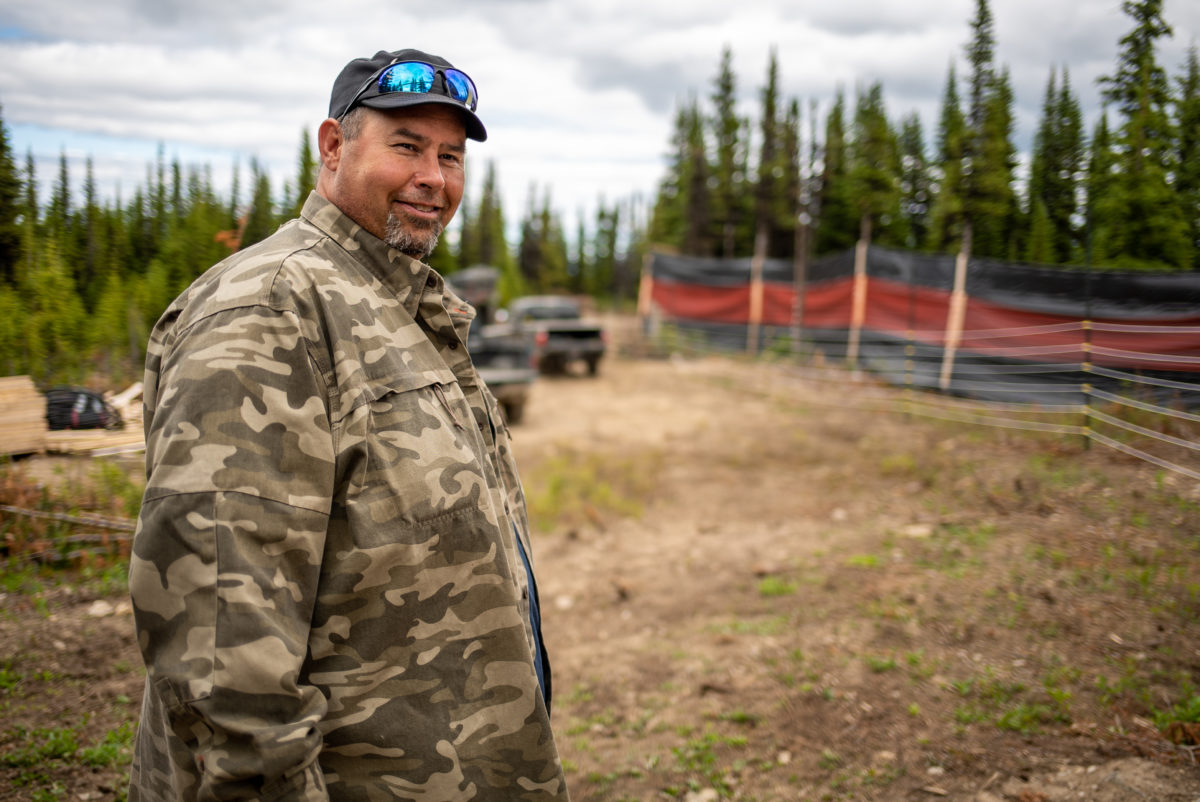
Hope for a huge, ancient and imperilled fish
First Nations are leading efforts to make sure lake sturgeon can find a home in...
SNC-Lavalin has received approximately $120 million in direct award Site C dam contracts, obscuring the embattled engineering firm’s role in building the largest publicly funded infrastructure project in B.C.’s history.
For one contract, SNC-Lavalin provided BC Hydro with a “shadow estimate” — number-crunching to confirm BC Hydro’s figure — for its forecasted $8.335 billion price tag for the dam, The Narwhal found after reviewing Site C documents.
The estimate proved to be wildly wrong, missing the mark by $2 billion.
But that hasn’t stopped SNC-Lavalin — which has been banned from World Bank infrastructure contracts for 10 years following allegations of bribery schemes in Bangladesh — from reaping years of no-bid work on the Site C dam for engineering design services.
Direct award contracts allow BC Hydro and other public bodies to decide which companies or consultants get contracts, instead of going through a more transparent and competitive tender process.
On Wednesday, a Quebec judge ruled that SNC-Lavalin must stand trial on charges of fraud and corruption for allegedly paying $47.7 million in bribes to public officials in Libya between 2001 and 2011. The RCMP has also charged SNC-Lavalin, its construction division and a subsidiary with one charge each of fraud and corruption for allegedly swindling almost $130 million from various Libyan organizations.
There is enough evidence against SNC-Lavalin for the engineering corporation to be tried on fraud and bribery charges, a Quebec Court judge has ruled. https://t.co/eCI1z7M0HY @jonmontpetit
— CBC News (@CBCNews) May 29, 2019
Criminal proceedings against SNC-Lavalin began last fall after the company failed to obtain a deferred prosecution agreement that would have allowed it to pay a fine rather than proceed to a trial. Allegations of political inference to avoid a trial for SNC-Lavalin sparked a national furore and led to the resignation of federal Justice Minister Jody Wilson-Raybould, who declined to grant the company a deferred prosecution agreement.
SNC-Lavalin also played a major role in the cost estimate for the hugely over-budget Muskrat Falls dam on the lower Churchill River in Labrador, now the subject of a two-year inquiry to determine why the project proceeded.
SNC-Lavalin supplied about 70 per cent of the information for Muskrat Falls’ base cost estimate of $6.2 billion, according to testimony at the inquiry.
The dam’s price tag subsequently swelled to $12.7 billion, leaving Newfoundlanders facing untenable hydro rate hikes unless the federal government steps in to bail out the cash-strapped province.
Muskrat Falls inquiry co-counsels have suggested to Paul Lemay, SNC-Lavalin’s lead estimator for the dam, that the project might not have been approved by Newfoundland politicians if SNC-Lavalin’s cost estimate had been too high.

Normand Béchard, Muskrat Falls project manager for SNC-Lavalin, enters through security at the Muskrat Falls public inquiry in St. John’s, N.L., on March 27. Photo: Paul Daly / The Narwhal
A thumbs down from the province would have left SNC-Lavalin without “hundreds of millions of dollars” for Muskrat Falls engineering, procurement and construction management work it subsequently carried out for Nalcor, the province’s energy corporation, inquiry associate counsel Michael Collins recently suggested at the inquiry in St. John’s, Newfoundland.
“You don’t know what Nalcor’s budget was, but if you know that if your estimate was higher than the budget, the project wouldn’t go ahead,” Collins said.
“Well, it’s the same thing with any project, sir,” Lemay responded. “If you are going to produce an estimate that is beyond, you know, the budget that you had for it, the project will not take place. It’s normal.”
“So you did know that if your estimate was too high the project wouldn’t go ahead?” Collins asked.
“Well, of course,” Lemay responded, saying that Collins was “speculating.”
Dermod Travis, executive director of Integrity BC, a non-partisan organization working to ensure government integrity and accountability, said the Muskrat Falls and Site C dams are far from the first time that SNC-Lavalin has low-balled cost estimates for projects in Canada.
“SNC-Lavalin is not exactly renowned for cost estimates [that mirror … ] the final cost,” Travis said in an interview, noting that hospital projects, which are usually subject to more scrutiny, are often the exception.
“The Muskrat testimony speaks to that — in as far as if you don’t give the client what they want to hear, guess what? The client ain’t coming back to you again.”
BC Hydro says the John Hart Generating Station replacement on Vancouver Island — which SNC-Lavalin is designing, building, financing and maintaining — is on time and on budget, but Travis said the scope of the work has altered so much since SNC-Lavalin was awarded the contract in 2014 that it’s impossible to compare figures.
SNC-Lavalin’s direct award contracts for design services on the Site C dam include jointly designing the earthfill dam, river diversion works, major civil components of the generating station and “permanent excavations,” according to an email from BC Hydro spokesperson Mora Scott.
BC Hydro said SNC-Lavalin also received “several” sole source contracts in the 1990s and 2000s for work on the Site C dam. Those contracts are not listed on BC Hydro’s website, which lists Site C’s competitive contract awards.
In total, SNC-Lavalin has received about $120 million in direct award Site C contracts, BC Hydro confirmed.
“Details of all commercial arrangements, including SNC contracts with the Site C project, remain confidential in order to manage contracts in the best interests of BC Hydro and its ratepayers,” BC Hydro said in an emailed response to questions from The Narwhal.
The federal government prohibits direct award contracts worth more than $25,000 unless there is a special justification such as a national emergency or national security interests, but there are no such rules in B.C.
SNC-Lavalin’s involvement in the Site C dam can be traced back to 1988, when the engineering firm Klohn Crippen Berger Ltd. and a predecessor company to SNC-Lavalin signed a contract with BC Hydro, following what Scott described as a “public competitive procurement process.”
“As part of the contract, both firms would familiarize themselves with the design, project parameters and other information relating to Site C,” Scott said in an emailed response to questions from The Narwhal.
The two companies provided Site C dam engineering design and consultancy services intermittently to BC Hydro from 1988 to 2010, according to Scott.
She said the direct award contracts to SNC-Lavalin and Klohn Crippen began after former Premier Gordon Campbell announced in 2010 that the Site C dam would proceed and BC Hydro determined that more engineering work was required.
“Due to the size and complexity of the project, along with Klohn Crippen Berger and SNC’s depth of knowledge and expertise of the project, it was determined that only these engineering firms had the expertise, experience and capacity to provide the engineering design services that were required for Site C,” Scott wrote.
“And they still believe in Santa Claus, don’t they?” commented Travis.
Travis pointed out that SNC-Lavalin lists its chief competitors in annual reports, and BC Hydro would only have had to look at those reports to gather names of other engineering firms capable of working on the Site C dam.
“You can’t claim that SNC Lavalin is the only company in Canada that can do that kind of work. It would be a complete fallacy. You can’t use that as an excuse for direct awards,” Travis said.
“It comes back to the idea of breaking out of these old boy’s networks, which is what has been going on with infrastructure projects in B.C. for far too long … It’s too cosy.”

The Boon family farm at Cache Creek in the Peace River valley, which will be flooded for the Site C dam. Photo: Garth Lenz
SNC-Lavalin’s ties to the BC Liberal Party, which held power until 2017, are well documented.
The firm donated almost $28,000 to the party between 2005 and 2010, according to the B.C. government’s donations database. It did not donate to the BC NDP or BC Green Party.
Gwyn Morgan, the former chair of SNC-Lavalin’s board, was former BC Premier Christy Clark’s top transition team advisor. Morgan donated close to $286,000 to the BC Liberal Party between 2009 and 2018, according to the database.
Klohn Crippen, for its part, donated almost $30,000 to the BC Liberal Party between 2005 and 2014, the database shows.
Scott said BC Hydro is committed to following rigorous standards for all of its procurement activities, and that contracts are awarded “following a comprehensive evaluation and due diligence process.”
“It is only under rare circumstances like this that we direct award contracts,” she said.
The Narwhal previously reported that BC Hydro awarded almost $90 million in Site C contracts during a recent 18-month period without asking for bids.
Two contracts worth close to $11 million went to a B.C. numbered company whose officers and directors were top executives of Petrowest, the Alberta company that went bankrupt and was fired from Site C’s main civil works consortium.
The largest of the contracts, for $10.1 million, was awarded to the numbered company in late July 2017 — just two weeks before Petrowest was dismissed from the consortium for insolvency, according to documents obtained through a Freedom of Information request.
Three numbered companies in total received contracts, according to the Freedom of Information response, while four companies that donated to the BC Liberal party also received direct award contracts totalling $11.5 million.

Ken Boon in the kitchen of his and his wife Arlene’s home. The Boons’ house and much of their third-generation farm was expropriated two years ago by the B.C. government but they have refused to leave. Photo: Garth Lenz / The Narwhal
Scott said the Site C direct award contracts to SNC-Lavalin build on the decades of project knowledge and experience held by the company and have resulted in additional project benefits “related to schedule, cost and quality.”
The Site C dam was announced by Campbell as a $6.6 billion project and approved by Clark in December 2014 as a $8.8 billion project (including a $440 million reserve).
In December 2017, Premier John Horgan greenlighted the Site C dam with a new price tag of $10.7 billion. A fast-tracked review by the watchdog BC Utilities Commission found the dam’s final cost could exceed $12.5 billion.
Scott said the decision to grant direct award contracts to SNC-Lavalin underwent “multiple levels of internal reviews and approvals,” as well as an external legal review to ensure the sole source award was consistent with interprovincial trade agreements.
The New West Partnership Trade Agreement among Canada’s western provinces mandates that any services or construction contract greater than $100,000 should be issued through open tender unless a public agency can prove an urgent or specialized need.

Site C dam construction on the Peace River in October 2018. Photo: BC Hydro
BC Green Party leader Andrew Weaver told The Narwhal that BC Hydro needs to be far more transparent about contracts and other issues. He pointed to unanswered questions about B.C.’s energy demand and supply and controversy surrounding the B.C. government’s recent report about independent power producers as examples of the need for more transparency.
Many of BC Hydro’s numbers have been challenged by external agencies, Weaver noted.
“Our concern is to what extent BC Hydro has really pushed the case for Site C beyond what I think is defensible in light of the prices of new supply that would come on from renewables.”
The lack of transparency has eroded public trust in BC Hydro, Weaver said.
“I think BC Hydro’s got a big job there to actually rebuild public trust. And I think the best way to rebuild public trust is to start by being fully transparent with contracts, with competitive pricing options, with respect to base load supply … .”
Site C dam services provided by SNC-Lavalin prior to 2010 include a November 2005 “site reconnaissance” mission to scout out three potential sites for the Peace River dam.
According to one report, SNC-Lavalin engineer Alfred Hanna flew from Vancouver to Fort St. John with two BC Hydro engineers and John Nunn from Klohn Crippen. (Nunn went on to become both Site C’s chief project engineer and a member of the secretive Site C dam “project assurance board” set up by Horgan to oversee construction of the project.)
The quartet rented a helicopter and snapped aerial photographs of the Peace Valley’s notoriously unstable slopes, including the site of a 1989 Halfway River landslide that sent 3.6 million cubic metres of debris into the Peace River.
The report they produced from that two-day trip indicates that BC Hydro’s proposal to build the Site C dam was already well in motion at the time — the men checked on instrumentation and took photos of Peace River islands where test fill was to be placed, also documenting an exploration tunnel entrance.
Two years earlier, the two companies also produced a report for BC Hydro on the potential for a series of cascading dam structures instead of one large dam. The smaller series of dams would have spared the West Moberly River area — identified by Treaty 8 First Nations as containing some of the most important cultural and spiritual values in the valley — and caused far less flooding of farmland and habitat for bird, butterfly and mammal species that are vulnerable to extinction.
SNC-Lavalin and Klohn Crippen concluded the cascading dam structures would cost $3.6 billion, compared to a projected $2 billion cost for the Site C dam at the time.

West Moberly First Nation Chief Roland Willson has been a vocal opponent of the Site C dam. Photo: Jayce Hawkins / The Narwhal
Between 2005 and 2012, SNC-Lavalin and Klohn Crippen teamed up to produce at least five more reports that helped BC Hydro move the Site C dam forward. The reports included a 2012 reservoir filling plan and a 2009 report on relocating a provincial highway out of the flood zone.
According to BC Hydro financial documents, the public utility paid SNC-Lavalin more than $453 million between 2010 and 2018 for work on the Site C dam and other projects.
In the fiscal year ending March 31, 2018, the last year for which information is available, BC Hydro paid SNC-Lavalin more than $45 million for its services.
SNC-Lavalin’s website does not mention either the Site C or Muskrat Falls dam projects. The media relations contact form on the company’s website was broken when The Narwhal tried to use it, and an email to SNC-Lavalin’s office in Vancouver, forwarded to the company’s national media relations department, went unanswered.
Travis said a watchdog representative from civil society needs to be involved in publicly funded projects “all the way along,” from conception to ribbon-cutting, to make sure the public is getting the best deal.
“That person’s job has to be nothing but saying, ‘excuse me, I’m the one who’s going to be paying for this at the end of the day.’ ”
Get the inside scoop on The Narwhal’s environment and climate reporting by signing up for our free newsletter. Angello Johnson’s shoulders burn, and his arms...
Continue reading
First Nations are leading efforts to make sure lake sturgeon can find a home in...

We’re excited to share that an investigation by The Narwhal is a finalist for the...

A new documentary, Nechako: It Will Be a Big River Again, dives into how two...
